GoPro Hero7 White Review
GoPro Hero7 White Review
A budget action Hero for beginners
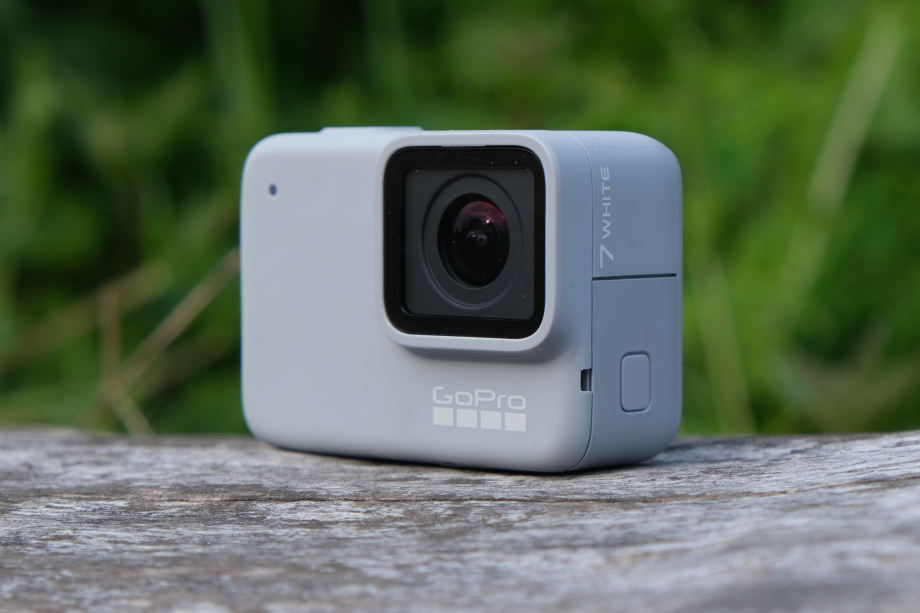
Verdict
A simple, stripped-down action camera – the Hero 7 White is slicker and easier to use than most of its budget rivals.
Pros
- Solid 1080p video quality
- Decent stabilisation
- Simple to use
- Excellent water-resistance
Cons
- No 4K
- Operation speed seems clunky in 2019
- Slo-mo is barely slow
- Limited modes (including no Linear mode)
Key Specifications
- Review Price: £179.99
- 1080p/1440p video, 30/60fps
- 10-megapixel 4:3 sensor
- 10-ATM water-resistance
- Electronic image stabilisation
- Voice control
What is the GoPro Hero7 White?
The GoPro Hero 7 White is an action camera for those who want a GoPro, but can’t stomach the cost of the excellent GoPro Hero7 Black. This one costs £179, roughly half the price, and is the entry-level GoPro option below the Hero7 Silver and Hero7 Black.
It’s significantly stripped back in some areas. The GoPro Hero7 White can’t shoot 4K video or particularly impressive slo-mo; in fact, you can’t do much more than point and shoot.
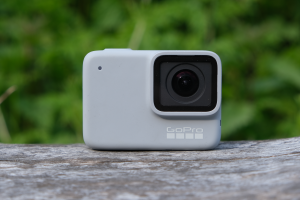
However, this makes it perfect for the holiday-makers, hobbyists and beginner YouTubers who want a lower-cost action cam. Video and audio quality are impressive, too; far better than expected.
It is possible to pick up an action cam with a greater number of features from one of the many Chinese rival brands at the same price, but none have the no-nonsense reliability and usability of a GoPro7 White and its app.
GoPro Hero7 White – Design and build
GoPro action cams have a signature look and this model is no different: the Hero7 White is a little palm-size nugget of soft-touch plastic. What it lacks in subtlety it makes up for with its ability to be mounted on just about anything.
You get a mount-ready casing in the box and some mount bases, but many will need to head straight to the accessory store. Neither a mini-tripod or hand-grip comes bundled.
Related: Best Action Cams
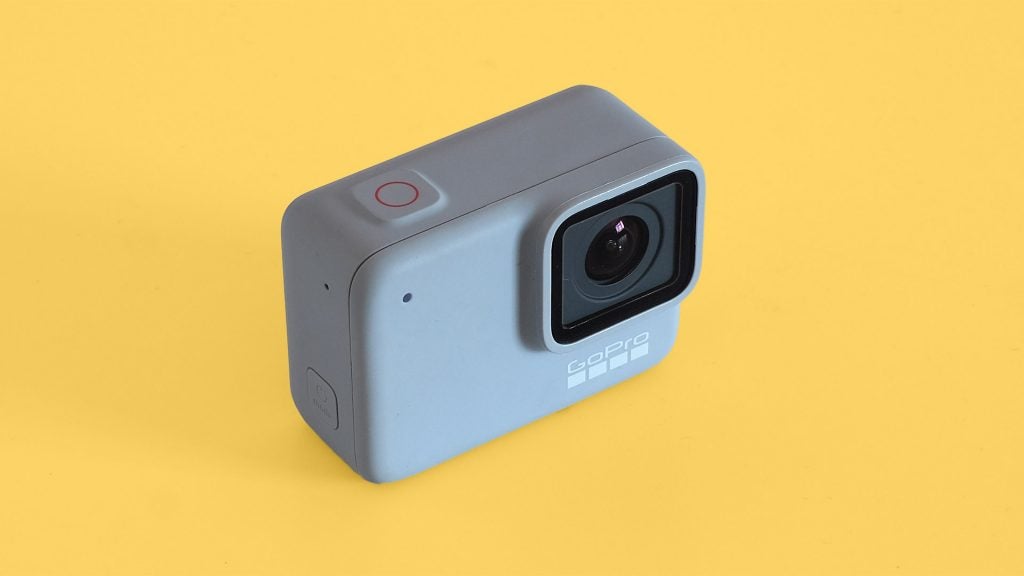
Those with some GoPro experience will know instantly that this isn’t a high-end model. The GoPro Hero7 Black has a front display that’s lacking here and in the Hero7 Silver. That display indicates when the camera is recording and how much battery is left.
You get a front red LED instead, and the standard array of GoPro bleeps. The Hero7 White is made for “normal” people, not guerrilla film-makers.

GoPro hasn’t taken the White’s humbler aspirations as an excuse to limit where it can go, mind. The Hero7 White offers the same level of water-resistance as the pricier Black version. You can hear its little rubber-ringed panel, on the inside of the connector flap, pop when opened up.
Water-resistance is rated at 10-ATM, which is strong enough for underwater snaps without a diving case. This is one of the better reasons to buy a GoPro Hero7 White. I’d trust the water-resistant seals of a GoPro over a little-known Chinese brand, even if this model does lack the replaceable lens protection you get on a Hero7 Black.
That said, it’s worth bearing in mind that the GoPro warranty doesn’t cover waterhousing leakage (due to the possibility of user error), although if you pay for its £4.99 per month Plus subscription service then you do get a “no questions asked” replacement service for damaged GoPros.
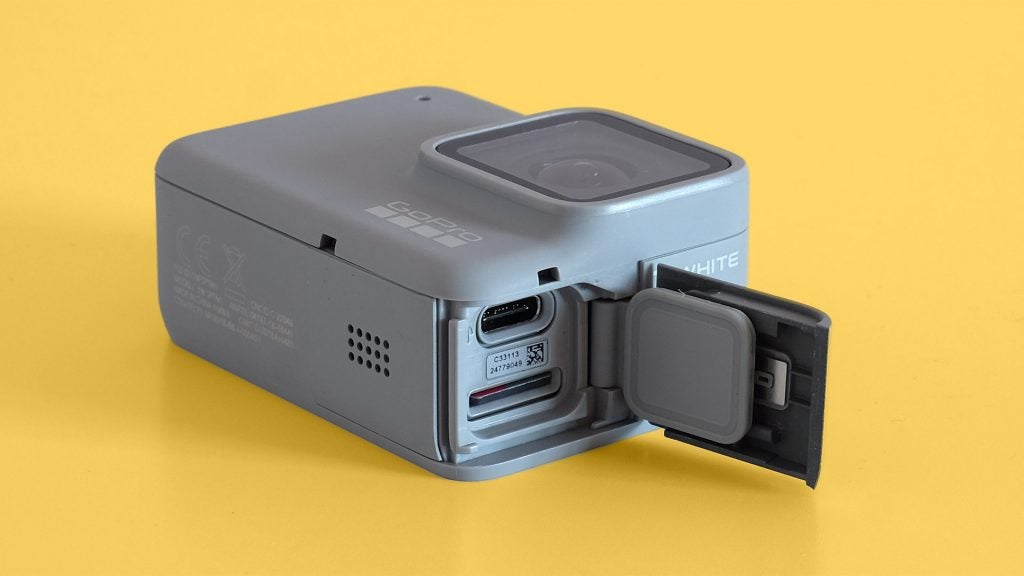
Flip open that door and you see the GoPro Hero7 White’s USB-C port and microSD slot. This action camera has a built-in lithium-ion rechargeable battery, which is a slight shame – any semi-serious videographer will want a swappable battery. The unit lasts for around two hours of continuous footage, or much less if you shoot brief spurts of video.
If this isn’t enough for you, there is another solution. You can buy an external battery and charge it in-situ. This isn’t feasible for a whole raft of scenarios, though – are you going to leave a lead trailing from your bike helmet to your rucksack? An open charge port also kills the Hero7 White’s water-resistance.
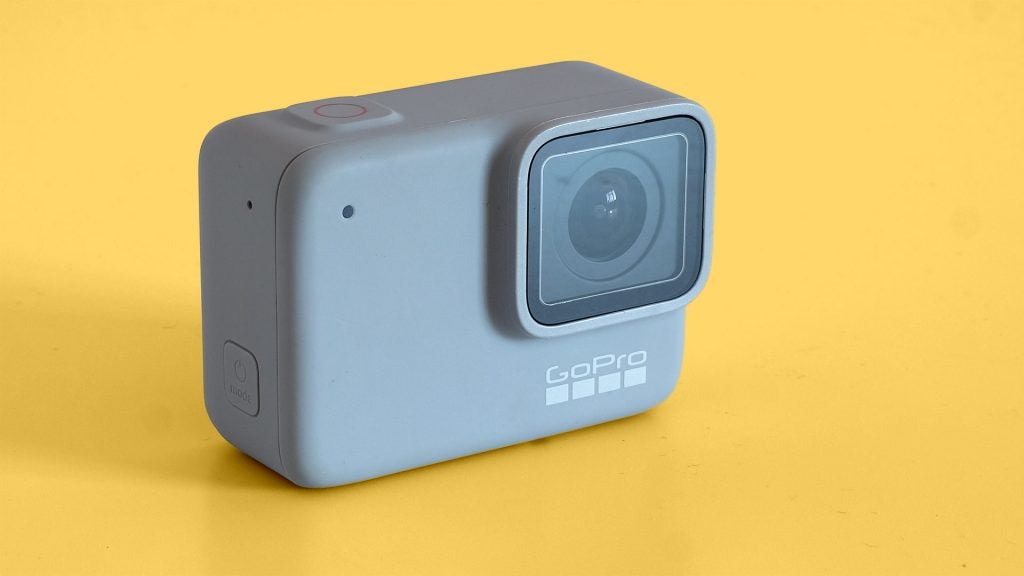
GoPro Hero 7 White – Features and interface
The GoPro Hero7 White has a simplified version of the software used in the Hero7 Black. You can either swipe the screen to bring up the menu that switches between photo, video and time-lapse modes, or use the little Mode button on the side of the unit.
There’s very little control beyond this; there’s no giant catalogue of quality settings or frame rates. This is because the camera doesn’t have higher-end shooting modes such as 4K, a “flat” profile or extreme slow-mo, because the Hero7 White is meant to be simple. You press the button on top and it starts shooting. You press it again, it stops.
There are a few ways to operate the GoPro Hero7 White. You can use voice commands instead of a button, although this does require the camera to be turned on, so isn’t ideal for impromptu shots.
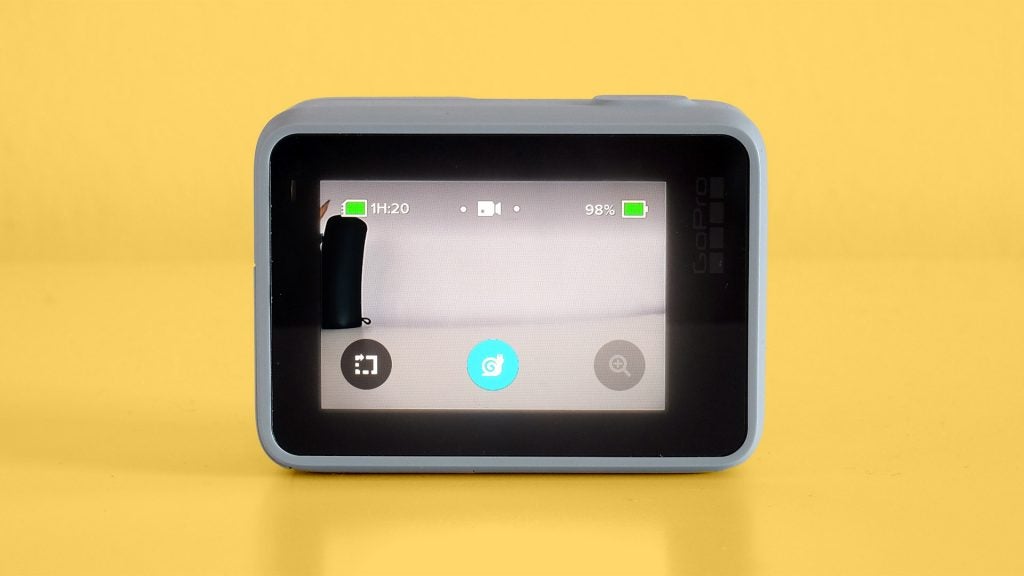
You can long-press the shutter to make the White start shooting as quickly as possible from its “off” state. The speed of this is the one of the key parts I’d like to see GoPro improve in the future. Compared to the near-instant standby shooting of some phones with such a quick photo feature, the 3-4 seconds the GoPro Hero 7 White takes seems slow.
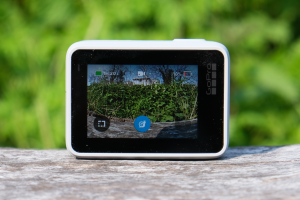
The faster an action camera can react, the better. The interface here is quite sluggish, particularly compared to the phones we now take for granted.
You get an instant preview of your footage on the two-inch screen on the back and there’s no obvious image lag. Its clarity is good enough for basic image composition and reviewing your footage.
GoPro Hero7 White – Performance and video quality
4K is the big feature lacking on the GoPro Hero7 White. There are two resolutions you can choose between: standard 1080p or 1440p, which simply extends the vertical axis to use the whole of the 4:3 aspect sensor. The 1440p image isn’t sharper, it simply won’t be cropped. If you don’t see this option in the Settings menu, give your camera an update. GoPro added it post-launch.
GoPro also says the Hero7 White has slo-mo video, but it isn’t up to the standards of the latest phones, or the high-end GoPro models. The Hero7 White shoots at “2x”, which equates to 60fps. It’s a normal frame rate; the camera simply configures its playback for an appreciable slo-mo effect.
This seems a box-ticking exercise, since this isn’t what comes to mind when most people think of modern slo-mo video. We’re spoilt by phones, with even mid-range models often able to shoot at 120fps.
The GoPro Hero 7 White is largely frills-free. Still, that the core quality of each aspect of its video is rock-solid makes this one of the better affordable action cameras.
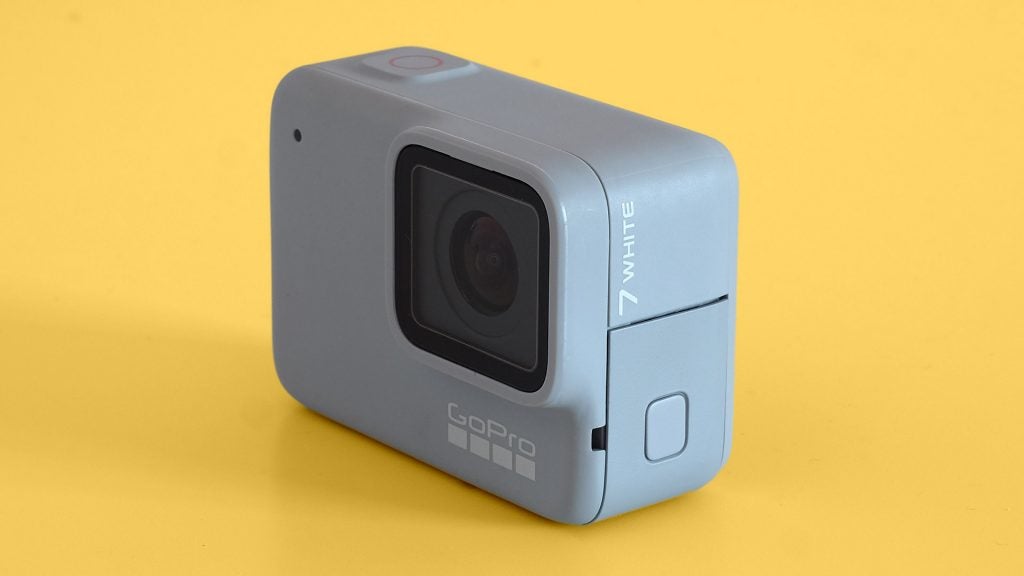
Handling of variable light levels within the same scene is good. Exposure management and dynamic range are also solid. You can shoot without thinking, and if the sun comes into the shot then you won’t usually see huge areas whited-out by overexposure, or darker areas of the image becoming very dim.
For example, tonal gradations in hedges and grass are handled well, and the Hero7 White has a pleasant, slightly warm-leaning colour tone, more so than the GoPro Hero7 Black. That model’s footage looks quite cool in comparison.
Detail capture is similar to that of the GoPro Hero7 Silver. You can see the separated branches in far-away trees as you pass. The processing handles the grain of a tarmac road well. It avoids obvious artefacting and any awkward transition between the rendering of fine surface texture and the point at which it can no longer do so.
Compare it directly to the GoPro Hero7 Black, or even the older Hero6 Black, and you see what the extra spend gets you, even at 1080p level. The Black cameras record sharper video, with fine detail much better resolved. Nature scenes appear significantly more – well – natural, with less of a sense you’re looking at an image that’s been processed to deal with the limitation of the sensor.
Black-series cameras are better, which is no surprise. But if I weren’t comparing the Black and White cameras side-by-side I’d be perfectly happy with the White.
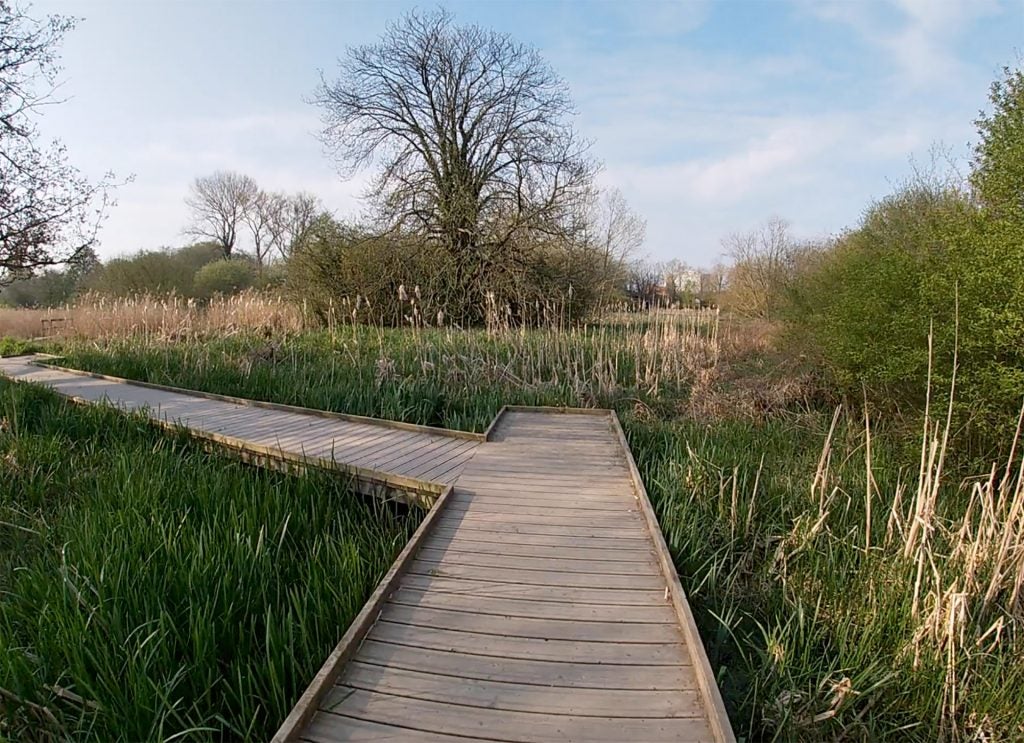
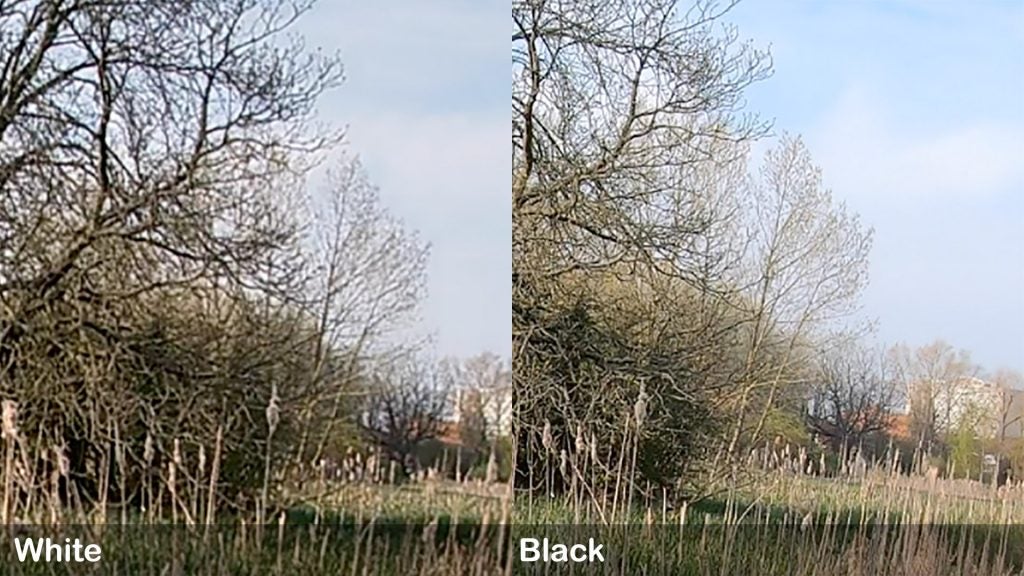
The differences predictably become more distinct at night. This is, at best, a fair low-light video camera. In dim indoors lighting detail drops off significantly, and night footage isn’t particularly bright. It’s easy to see that the GoPro Hero7 White’s 10-megapixel sensor isn’t natively ultra-sensitive. This is simply more proof that the White is made for typical action camera scenarios, not specialised ones.
Stabilisation is good, just not as good as the higher-end cameras. It takes the lumbering clunk out of run videos, removes the unending rumble of non-stabilised cycling footage.
However, at times it does introduce some unnatural looking judder, usually when there’s a sudden, fast movement. Digging through the GoPro Hero7 White’s footage frame-by-frame, this is because the stabilisation actually stretches across parts of the image. At one point, after riding over a nasty bump in the road, the top quarter of the picture – the tree line – is stretched for a frame. Watched at normal speed, this manifests as an odd wobble in the video.
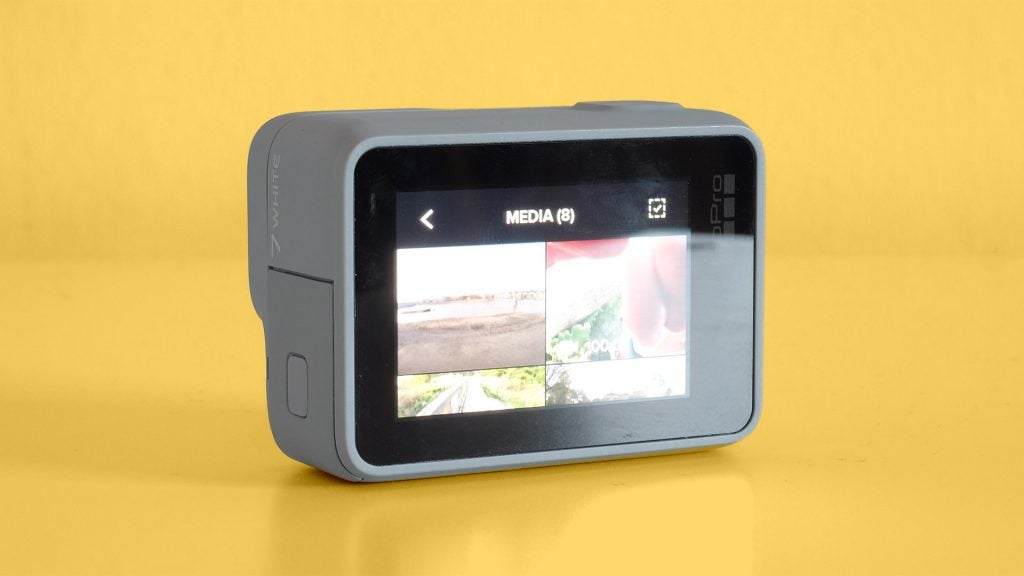
To understand the reasons this happens, let’s look at how the Hero7 White’s stabilisation works. There are two main forms of stabilisation: optical and electronic (or software-based); GoPros use the latter. This involves capturing a cropped version of the camera sensor’s full field of view, leaving a band of otherwise unused image information that the stabilisation algorithm can use to smooth out bumps.
The stretching likely occurs when there isn’t enough of this image buffer to get by. In the comparative testing I did, the GoPro Hero7 Black avoids these unnatural wobbles. You might assume this is down to the Black’s higher-sensor resolution, but the field of view is more important in this case.
You can’t change the GoPro Hero7 White’s field of view, unlike the Black and its ultra-wide “SuperView” mode, suggesting the lens itself has a narrower FoV. The White has a wide-angle look, but it is’ot the “larger than life” view of a fisheye lens.
Still, like the core video quality, stabilisation is good enough to satisfy most, as is sound quality.
The GoPro Hero7 White has two microphones, of which the second is used to counter wind noise. Captured sound hassolid bass reproduction and general clarity. It lacks some of the spark of the Hero7 Black, which reduces its dynamic range and clarity. But GoPro has avoided the “cheap” sound you might expect from an entry-level action camera. Granted, £180 isn’t quite an entry-level price compared to some action cams, but it is for a GoPro.
Once again, though, the limitations show this clearly isn’t a “pro” camera. You can’t attach an external mic, which you’ll need for footage that exudes high production values. There are ways around this, of course. You could use a field recorder, and combine the audio and video using editing software, but this complicates your workflow.
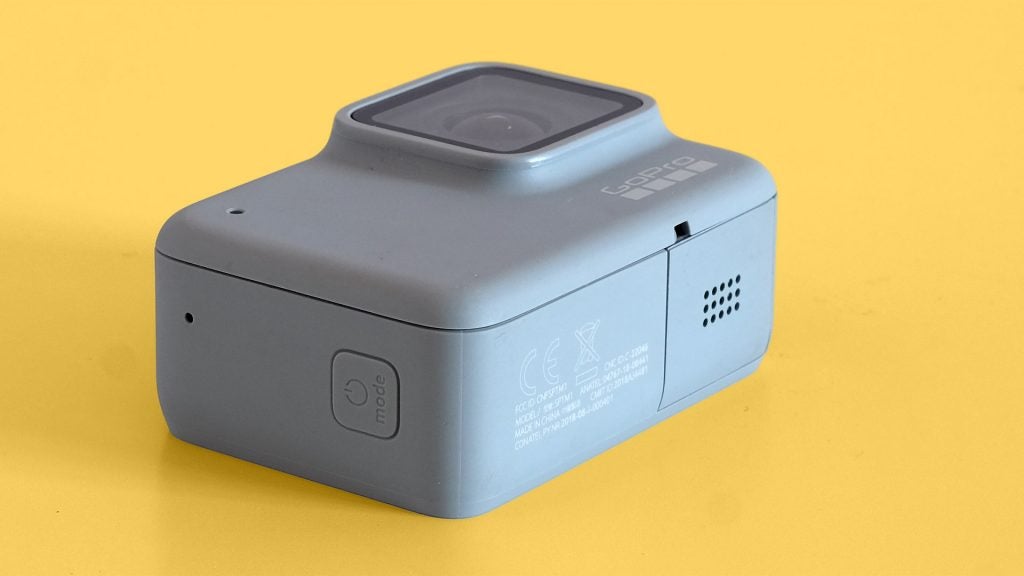
GoPro Hero7 White – Editing and other features
GoPro offers its own easy editing software called Quik, and there’s a version for your Android or iOS phone.
Quik doesn’t restrict you to GoPro videos. You can combine images and videos shot using your phone, too. Choose your images and clips, and Quik auto-edits them into a single montage. You choose a profile, which determines the transition style and background music.
Go deeper and you can trim clips, add text to them and fiddle with speed.
Video is the real test, and the main job, of a GoPro. But you can also shoot stills and time-lapse video, speeding-up the action. I wouldn’t advise buying an action camera just for these, though. Phone cameras have come too far in the past few years to justify the expense, unless you really need the weatherproofing. One final point to note: the Hero7 White doesn’t have GPS, which means your photos and videos aren’t geo-tagged.
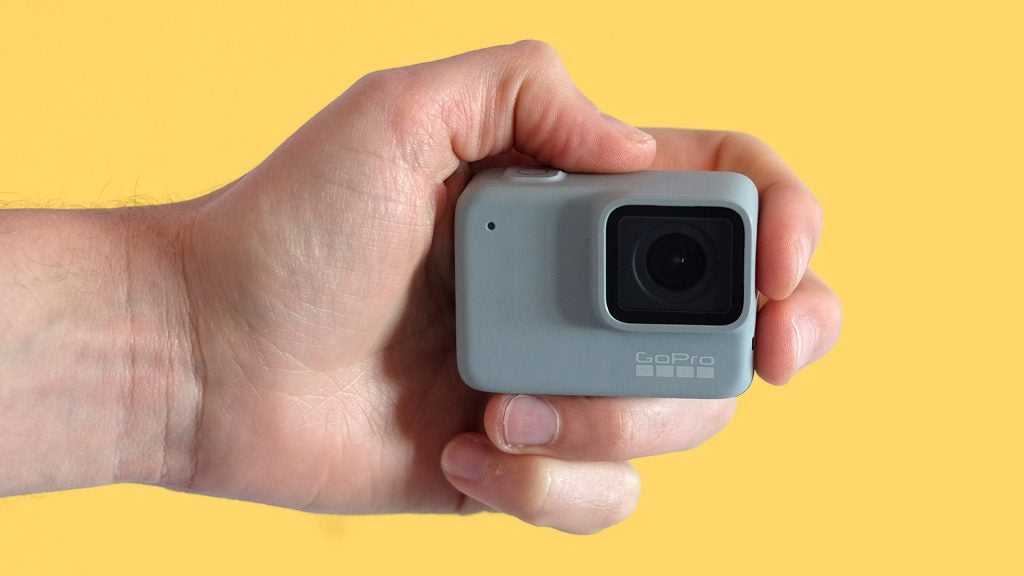
Why buy the GoPro Hero 7 White?
If you fancy yourself a professional YouTuber in the making, you should aim higher than the Hero7 White. It doesn’t capture in 4K, offer proper slo-mo or any way to attach an external mic. If you need those features, then the GoPro Hero7 Black is the best action camera you can buy right now.
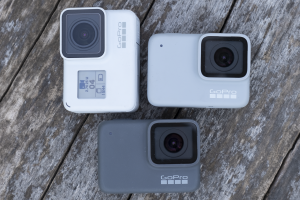
Clockwise from top left: GoPro Hero 7 Black (Dusk White), GoPro Hero 7 White, GoPro Hero 7 Silver
But for most action camera buyers, it’s easy enough. Video quality is good, stabilisation is solid and even audio quality is sound. Ease of use is great, too, although GoPro needs to improve the responsiveness of the software and general shooting, which seems a little clunky compared to smartphone cameras.
Trusted Score
Features
| Video (max res/format) | 1440p / 60fps |
| Memory card slot | microSD |
Physical Specifications
| Dimensions Width (Millimeter) | 62.3 |
| Depth (Millimeter) | 28.3 |
| Length (Millimeter) | 44.9 |
| Weight (body only) (Kilogram) | 0.924 |


